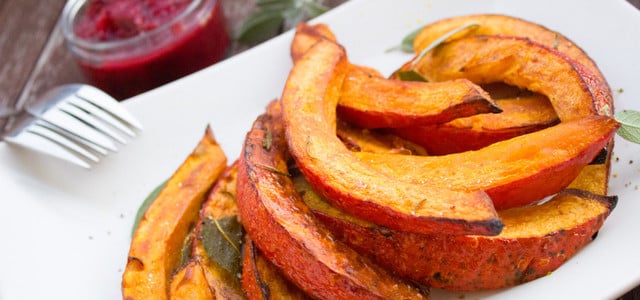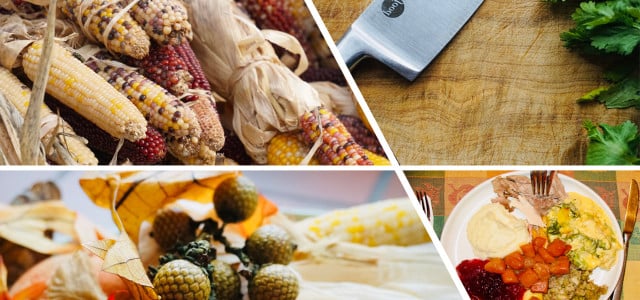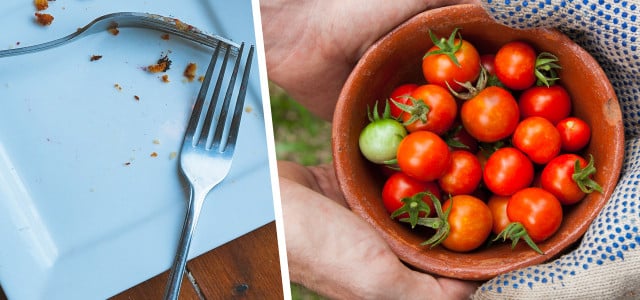Pumpkins like winter squash, butternut squash, and the Hokkaido pumpkin are not only delicious but also offer great nutritional benefits. Surprisingly enough, there are many varieties with edible skins. Read on to find out if you can eat pumpkin skin.
Pumpkins are a typical fall food. They are usually locally produced and can be used in a large variety of seasonal dishes. Their preparation can seem time-consuming, especially when your pumpkin recipe asks you to remove the rinds and the pumpkin skin. Luckily, some pumpkin skins are edible. You can eat butternut squash skin, for instance, and Hokkaido pumpkin skin, too.
Most pumpkin varieties are harvested in the late summer and early fall. However, since pumpkins can easily be stored for a long time, you may even find regionally harvested pumpkins until early spring at your local farmers’ market.
Although there are hundreds of different types of pumpkin and squash, depending on how you cook the pumpkin, the most popular options are the Hokkaido pumpkin (also known as the red Kuri squash) and the butternut squash.
Occasionally you’ll come across the even bigger muscat squash in the supermarket as well. These three varieties alone offer an abundance of different cooking options. However, you’re bound to find some other exciting edible varieties at your local farmers’ market or organic grocery store.
Pumpkins: What to Look for and How to Store Them
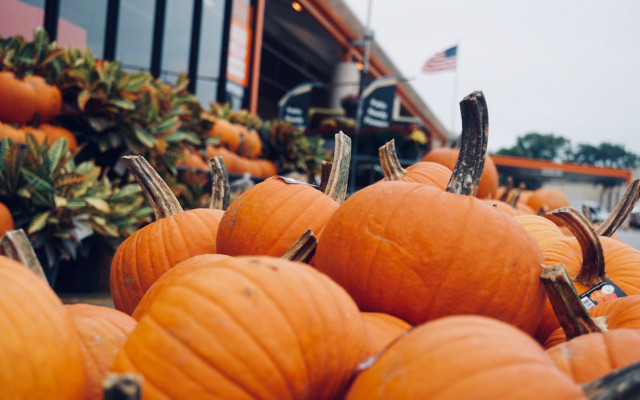


- The season runs from the end of August until late April for locally produced and organic pumpkins.
- Look for a rind that is in good condition. If the skin already shows more than minor imperfections, the pumpkin will spoil quickly.
- To determine if a pumpkin is ripe, you should knock on it; if it sounds hollow, then it’s ripe (especially with Hokkaido, butternut, and muscat varieties).
- If kept in a cool, dark, and dry place, most pumpkins will keep for months. You can find more tips for storing food correctly here.
- Once cut, pumpkins will last about one week if kept refrigerated.
- Pumpkin slices can also be frozen for later usage: Simply wash, cut, and dry the pumpkin slices and pack them in freezer bags. This is especially useful when making pumpkin soup and pumpkin mash.
Can You Eat Pumpkin Skin?
Technically, the skins of nearly all pumpkin and squash varieties are edible; however, some varieties’ skins are simply too tough and take too long to soften when cooking, resulting in the flesh being ready well before the skin. Therefore, we recommend removing the rind of certain varieties prior to cooking. With the following varieties, the pumpkin skin is not too tough and cooks as quickly as the flesh.
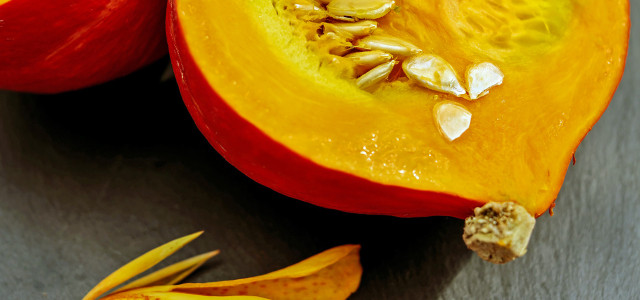


Hokkaido
Hokkaido pumpkins, also known as red Kuri squash, are some of the easiest pumpkins to prepare and store. Due to their ease of cooking, flavor, and small size, they are growing in popularity. These pumpkins are round, small for a pumpkin, and bright orange in color inside and out. Hokkaido pumpkin skin is perfectly edible and does not need to be removed regardless of how you want to prepare it.
Whether you roast the Hokkaido in the oven, turn it into soup, or pan fry it: The skin can be left on. Indeed, many cooks have found that doing so results in a more intense flavor and for this reason even prefer to leave the skin on.
Hokkaido pumpkins are great for everything from soup to roast vegetables, they can be mashed (a little like sweet potatoes), pan-fried, and added to salads, or even used for desserts like vegan pumpkin pies, cakes and muffins.
Butternut Squash
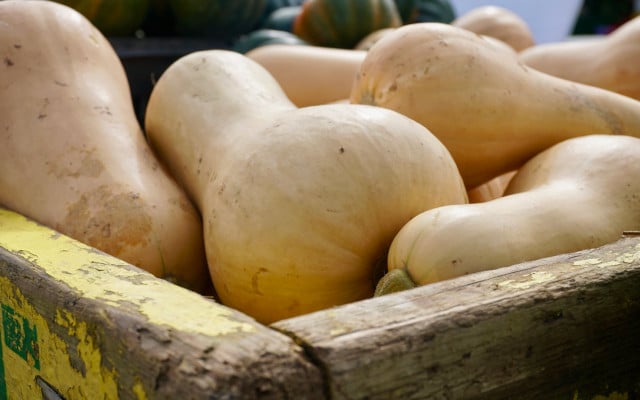


Butternut squash is popular and widely available. It has pale pinkish-yellow skin and is pear-shaped. Its insides are a lighter orange and it has a slightly buttery taste, hence the name.
The butternut squash’s skin is edible. It is very thin but rather tough. The skin can be easily removed with a normal veggie peeler, but for most recipes, it’s really not necessary. It depends on how long the skin will be cooked, as it does take a bit longer to soften.
If you plan to roast the butternut squash, then it is probably better to remove the pumpkin’s skin, as it takes too long to soften. However, if you plan to use it to make a soup or to mash it, then the skin does not need to be removed. If you do remove the skin, it can be used to make a wonderful pan-fried vegetable dish: Simply fry it with some onions, carrots, and spices!
Creative Reuse of Pumpkin Skin
If you’re looking to mix up your smoothie game as seasons change, have a read through our DIY Pumpkin Smoothie recipe ideas and discover how to make your own simple, low-calorie substitute for pumpkin-flavored coffee drinks.
It’s more ecologically minded to make smoothies from fruits and vegetables that are fresh from the field or tree just around the corner. Local seasonal harvest calendars can help you keep tabs on what’s available in your region at any given time.
Smoothies also offer a great way to reuse various types of leftover kitchen scraps – feel free to check out our guide on reusing vegetable scraps such as how to eat pumpkin seeds, pumpkin skin, and carrot peel in a bunch of creative ways:
- Pumpkin Recipes: 3 Easy and Healthy Alternatives to Soup
- Roasting Pumpkin Seeds In The Oven: Quick & Easy
- Homemade Pumpkin Spice Latte Recipe You Need to Try
- Pumpkin Gnocchi With Sage Butter Sauce: All-Natural Recipe
- How to Make Pumpkin Dip: All Natural Recipe
- Vegan Pumpkin Cheesecake: An Easy Fall Recipe
Want to learn more about sustainable lifestyle choices? Follow us on Instagram!
Important Information regarding Health-related Topics.
** Links to retailers marked with ** or underlined orange are partially partner links: If you buy here, you actively support Utopia.org, because we will receive a small part of the sales proceeds. More info.Do you like this post?






